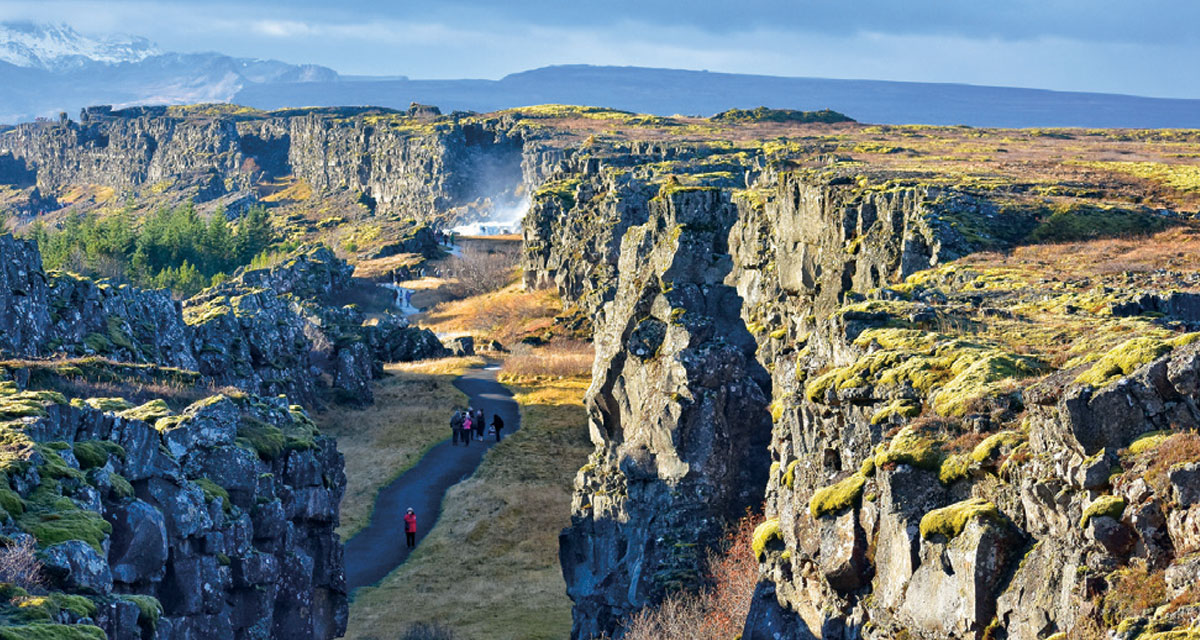Iceland is now an easier trip from the Triad. Icelandair announced the start of a non-stop, six-hour flight from Raleigh-Durham to Reykjavik on May 12. Trips can be scheduled on Tuesdays, Thursdays, Saturdays and Sundays through Jan. 7.
If you’re thinking ahead to next year, now might be the time to start planning your trip. Tourists hit the roads in late June, July and August. Prices for car rentals jump from $150 a day – not exactly cheap – to $250 a day during the high season. A great time to see Iceland without the crowds and increased prices is from June 1-15.
Driving in Iceland
The best way to see Iceland is by car. They drive on the right side of the road and you don’t need an international driver’s license. Just bring your U.S. license. One downside is the price of gas. It averages about $10+ a gallon – though.
Land of Fire and Ice
Iceland sits in the middle of two tectonic plates: North American and Eurasian. The result is that volcanism has shaped much of the landscape. This is obvious at Thingvellir National Park, which is 25 miles east of Reykjavik. This is the only place in the world where you can stand between two continental plates. The park is also the site of Iceland’s first general assembly, established in 930 and moved to Reykjavik in 1798.
In 2010, Eyjafjallajökull erupted from April to June. The volcanic ash forced nearly 20 countries to close their airspace to commercial jets. The eruption affected nearly 10 million travelers.
As for the “ice” part, Iceland has 269 glaciers that cover about 11% of the country. The melt from these mountaintop glaciers has created incredible waterfalls. The result is a vast – Iceland is about the size of Kentucky and only has a population of 376,000 – and natural landscape that’s constantly being transformed by fire, ice and water.
Myvatn Nature Baths
The massive geothermal activity in Iceland has created hundreds of hot springs and lagoons. A pleasant morning can be spent at the Myvatn Nature Baths in the north, 290 miles from Reykjavik.
These blue waters, ranging in temperatures from 100-104 degrees Fahrenheit, are full of rich minerals. The smell of sulfur permeates the air. The lagoon is about 4-feet deep and the bottom is covered in black sand.
If you want to stay closer to Reykjavik, the Blue Lagoon and the Secret Lagoon, are popular.
Into the Glacier
A nice cap to a trip is a visit to Langjokull Glacier, Iceland’s second largest glacier. It’s about a 90-minute drive from Reykjavik. In 2010, two men had a bold vision to take people inside the glacier. The result is the largest man-made ice tunnel in the world, about 765 yards long.
The 30-minute ride to the entrance is done in a truck with eight tires that used to be a NATO missile launcher in the 1980s. The tour of the cave takes about an hour. You’ll discover a wedding chapel, encounter several information boards about glaciers and stand beneath dense, dripping ice that is 150-feet deep. The three-hour trip is $307 for two.
Sheep and Horses
Throughout Iceland there are an amazing number of sheep along the highways. They appear to be wild, but each spring farmers release the sheep to feed in the vast fields and gather them in the fall.
Horses in Iceland are called Icelandic ponies because of their short stature. But they are strong, have wonderful colors and manes that are flashy.
Planning Next Year’s Trip
Leisure travel is expected to surpass pre-pandemic levels in 2023, according to the U.S. Travel Association. With all of this year’s air travel woes, it’s not too early to start thinking about future trips.
From landscapes to relaxation, Iceland offers a lot for travelers.


















